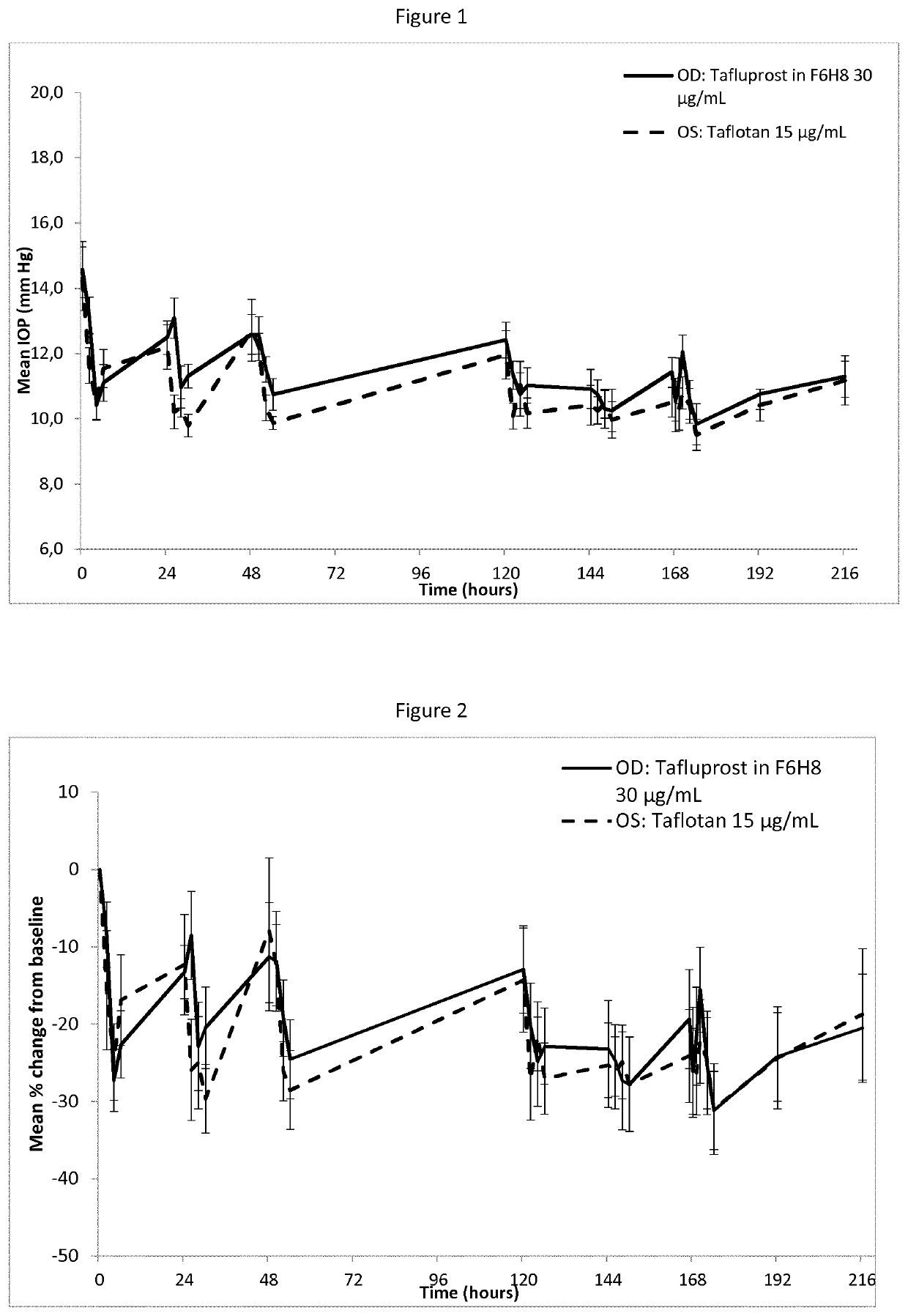Ophthalmic compositions comprising tafluprost for the treatment of glaucoma
- Summary
- Abstract
- Description
- Claims
- Application Information
AI Technical Summary
Benefits of technology
Problems solved by technology
Method used
Image
Examples
example 1
[0139]The study as described below was carried out in order to assess the pharmacodynamics of tafluprost (intraocular pressure, IOP) following repeated topical ocular doses of tafluprost in 1-perfluorohexyloctane (F6H8) in normotensive dogs and to evaluate the pharmacokinetics of tafluprost in aqueous humor. The dog is a suitable species for evaluating ocular distribution and pharmacodynamics of prostaglandin analogs; this model can also provide quantitative pharmacokinetic data.
[0140]Study Setup:
[0141]The animals were selected for participation in the study based on overall health, body weight, results of ophthalmic examinations, response to IOP challenge, and the following criteria:[0142]healthy, normal ocular surface;[0143]no invasive ocular procedures for at least one month prior to the study; particularly procedures involving the cornea or ocular anterior segment in general;[0144]no topical or systemic corticosteroid treatment for at least one month;[0145]washout from prior top...
PUM
| Property | Measurement | Unit |
|---|---|---|
| Fraction | aaaaa | aaaaa |
| Mass | aaaaa | aaaaa |
| Mass | aaaaa | aaaaa |
Abstract
Description
Claims
Application Information
 Login to View More
Login to View More - R&D
- Intellectual Property
- Life Sciences
- Materials
- Tech Scout
- Unparalleled Data Quality
- Higher Quality Content
- 60% Fewer Hallucinations
Browse by: Latest US Patents, China's latest patents, Technical Efficacy Thesaurus, Application Domain, Technology Topic, Popular Technical Reports.
© 2025 PatSnap. All rights reserved.Legal|Privacy policy|Modern Slavery Act Transparency Statement|Sitemap|About US| Contact US: help@patsnap.com

